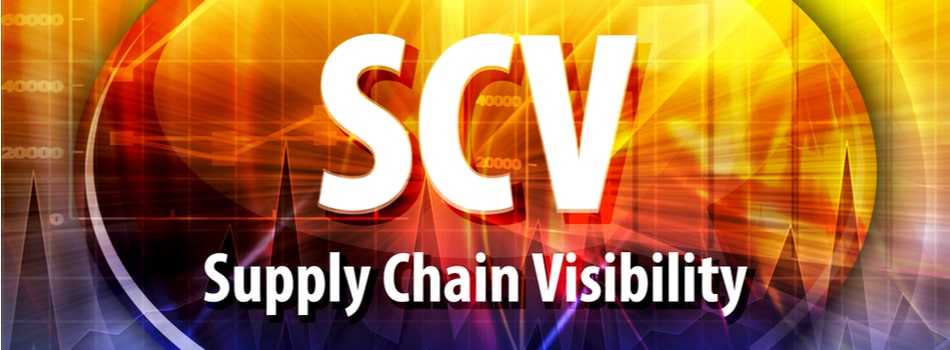Even the biggest companies make supply chain management mistakes, and they typically have dedicated management hierarchies focused solely on balancing supply and demand.
For the smaller business, with a management team that has to juggle multiple areas of responsibility, it’s even easier to inadvertently neglect, overdo or omit certain aspects of supply chain management—or just get them plain wrong.
Do These Things Right For Supply Chain Success
If you can focus your management team on continuous improvement in the following eight areas, your supply chain shouldn’t run into the sort of difficulties which sometimes scupper newly-established or small businesses.
1. Process Efficiency
It’s not uncommon for small and medium-sized businesses to lack supply chain process efficiency. Common mistakes in process management include:
- Use of paper-based workflows
- Putting technology before process
- Failing to learn from industry best-practices
- Maintaining processes and process steps which add little or no value for customers
Your team should continually focus on streamlining supply chain processes for value, using technology where it makes sense to do so. Paper-based processes should be eliminated, as business software applications are affordable and get things done much more efficiently.
2. Visibility Where it Matters
Does your company have true supply chain visibility? Many business leaders confuse the need for visibility where it matters with visibility throughout the supply chain.
With so many analytics applications available and all the hype about big data, a lot of companies are drowning themselves in supply chain data to the point where it’s hard to see the wood for the trees.
You don’t necessarily need access to real-time data from one end of the supply chain to the other, but you do need to know the points where visibility adds value and to apply solutions at those points.
One of these points is order and delivery. Since the significant shift by customers to ordering products online as a result of the Coronavirus pandemic, there has been little tolerance for delivery and product errors.
With so much choice now available in ecommerce retail markets, order and delivery mistakes can soon prompt customers to take their business elsewhere.
Furthermore, online shoppers want direct visibility into the progress of their deliveries, so you don’t just need the tools to monitor the process internally—you need to deliver the same capabilities to your customers through real-time order and delivery tracking facilities.
3. Confusing Strategic with Single (Sourcing)
Single sourcing is a supply chain trend which can easily lead to mistakes for small and medium-sized businesses, especially if it’s chosen as a strategy without regard to the potential risks.
While it can pay to have a single strategic supplier for primary materials, it can also create a point of supply chain weakness, as happened when Covid-19 roiled supply chains in the first half of 2020.
The pandemic starkly highlighted the need for companies to have back-up suppliers. It’s certainly something to consider if you currently maintain a single-sourcing strategy. You might wish to consider adding a supplier or two, even if you have them fill only a small percentage of your key material or component demand.
4. Inventory Management
Not only is it very common for companies large and small to get inventory management wrong, it also tends to be one of the most detrimental mistakes, especially for smaller businesses and start-ups.
Too much inventory ties up cash unnecessarily—cash which may never be fully liquidated given the risk of inventory obsolescence.
On the other hand, holding inventory in the wrong places or lowering stock levels too much can create customer service issues and lose sales for your company. The balance is a sensitive one, so sound inventory management, ideally supported by appropriate digital technology, must be a priority.
Of course, manual systems allow small business owners to manage inventory with limited investment in systems. However, a single data entry error can throw out calculations and significantly impact planning. That’s why most companies these days opt for more sophisticated, software-driven inventory management systems, such as:
- Barcode tracking: Used with special software, barcode scanners allow instant product identification and labelling.
- Radio Frequency Identification (RFID): More accurate than barcode tracking, RFID solutions allow a company to identify and track components, materials, and finished goods throughout the supply chain, from production to point-of-sale. They deliver the most up-to-date inventory data, allowing purchasing teams to make better buying decisions.
5. Supplier Relationships and Management
This one goes hand-in-hand with inventory management and again, is something which can create real problems if you get it wrong. Typical errors in supplier management include:
- Underestimating supplier risk
- Failing to thoroughly screen new suppliers
- Neglecting the importance of building strategic relationships with key suppliers
- Working with too few or too many suppliers
- Ignoring the importance of metrics and KPIs to monitor supplier performance
While it may seem onerous to spend time and money cultivating partnerships with suppliers, doing so will strengthen your supply chain and save you from reactive management, which is inevitably more costly in terms of finance, management effort, and possibly even business reputation.
The Coronavirus pandemic has highlighted the hazards of underestimating supplier risk and not putting enough effort into forging solid partnerships with suppliers.
A study by PricewaterhouseCoopers showed that smart companies are taking steps to mitigate against future shocks in some of the following ways:
- Making direct contact with Tier-2 and Tier-3 suppliers to secure future product/ raw materials
- Buying ahead to secure product and raw material from impacted areas
- Snapping up future air transportation capacity
- Sourcing product from secondary suppliers where primary suppliers are impacted.
6. Uni-sizing Service Delivery
One-size-fits-all might work for the products you supply (depending on your brand segment) but it’s usually not a good idea for service delivery. The idea of segmenting service levels can seem counterintuitive, which is perhaps why companies make the mistake of offering the same service levels to every customer.
Rarely is this the best use of resources. In fact, it’s not unusual to see businesses suffering net losses on some sales as a result of uni-sized service policies.
By analysing the cost to serve different customer and product types, you should find you can organise your service into tiered levels, ultimately improving margins and possibly creating greater levels of overall customer satisfaction.
7. Human Resource Investment
When times are tough for smaller businesses, employee training and development is typically the first target for cost cuts. Since the supply chain is often seen as a cost centre, a reluctance to spend more than absolutely necessary is not uncommon—even during easier economic periods.
This is a big mistake though. Employee education should not be a casualty of spending restrictions in supply chain management.
Developing supply chain talent is one of the most cost-effective ways to invest in your business, not only because your operations will benefit directly from the expertise and skills of your people, but also because training and development aids employee retention, sparing you the costs involved in replacing lost talent.
8. The Prevalence of Silos
On the one hand, companies are investing in technology such as artificial intelligence, machine learning, and the Internet of Things to forecast demand and optimise cash flow, but on the other, they are allowing silos to exist, both between internal departments and external trading partners.
The prevalence of silos often means that pockets of data are locked away and that those using the technology—manufacturers, logistics providers, carriers, and trading partners—are unable to execute comprehensive analyses of the supply chain. Companies operating in silos have been shown to be inefficient and prone to duplications of effort.
Bringing teams together onto one platform and integrating across third parties can not only streamline processes but also cut costs.
A survey by Bain and Company found that savings from cross-functional supply chain management initiatives could be in the order of 10 to 20 percent. That’s a good enough reason to tear down those silos!
Are You Getting Supply Chain Management Right?
Do any of the points in this post resonate? Could it be that your supply chain needs work in some of the areas described? If so, you actually have some golden opportunities to improve your business performance by creating a stronger supply chain.
If you’re concerned about your company’s capacity to focus on supply chain improvement, why not consider getting help from a logistics consulting firm?
The right consulting partner—one that understands and specialises in supply chains for SMEs—will help you avoid the things companies get wrong in supply chain management. Of course it’s perfectly OK to learn by making mistakes, but better still if you can avoid them in the first place.
Editor’s Note: This post was originally published in November 2016 under the title “7 Things Companies Get Wrong in Supply Chain Management”. It has since been updated and expanded, to make the content more informative, comprehensive, and current, with a new section added.







